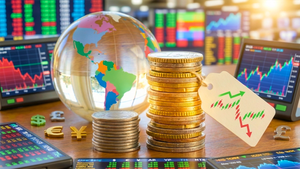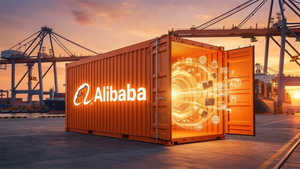IHS Markit Vice Chairman Daniel Yergin convenes panel of senior energy experts in latest edition of CERAWeek Conversations – available at https://ondemand.ceraweek.com/cwc
The pathways to net zero emissions by 2050 and the implications for energy markets, technology, geopolitics, supply chains and business strategy are explored in the latest episode of CERAWeek Conversations.
The pace and ultimate form of energy transition is a major force shaping the “New Map” of energy and geopolitics. Where past energy transitions have taken many decades or even centuries, ambitions to reach net zero emissions by 2050 necessitate a reshaping of the global energy system and the $93 trillion world economy in just 28 and a half years.
In a conversation moderated by Daniel Yergin, vice chairman, IHS Markit (NYSE: INFO) and author of The New Map: Energy, Climate, and the Clash of Nations, senior IHS Markit energy experts examine the key questions and implications on the “changing landscape” of energy transition.
“You can’t go anywhere in the energy world and indeed the policy world these days without running into those two words—Energy Transition,” Yergin says. “But energy transition has a lot of different meanings and there is a lot of confusion about it. So, what we want to do in this conversation is sort it out and provide some perspectives on where we are and where we’re going.”
Featured panelists:
- Jim Burkhard, vice president, oil markets, energy and mobility, IHS Markit
- Susan Farrell, vice president, climate and sustainability, IHS Markit
- Atul Arya, senior vice president and chief energy strategist, IHS Markit
The complete video is available at: https://ondemand.ceraweek.com/cwc
Podcast version available: CERAWeek Conversations is also available via audio podcast on Apple Podcasts, Google Podcasts, Soundcloud, Spotify and Stitcher.
Selected excerpts:
Interview Recorded Tuesday, July 27, 2021
(Edited slightly for brevity only)
- On the current momentum in global climate aspirations:
Jim Burkhard: “One of the more remarkable developments in 2020 that has continued into this year is the increase in aspirations on the part of governments to decarbonize. But if you go back to April of 2020—the depth of the lockdowns globally, the most severe global economic disruption since World War II—I don’t think it was inevitable at that time that there would be this move to increase aspirations to strengthen policy, to decarbonize. We saw aspirations increase; policies strengthen. Why is that?
“This is not just an academic question. The answer to this will shed light on how deeply rooted this recent momentum is. Part of the answer could be that COVID-19 reordered values and priorities for people [and] for governments. It could have also fed the sense that something is off track with nature.”
Susan Farrell: “The net zero target that started with China in September 2020—China is the number one emitter in the world—was a pretty big deal—followed by the number two emitter with the Biden administration also having a net zero by 2050 target. But in addition to that, there are several other actors on the stage who have really been forceful in the last 18 months. And the first is the financial sector.”
- On the long horizon of energy transitions:
Atul Arya: “Changing the energy system takes decades, sometimes more than decades. Just in the last 12 months demand for all energy sources—oil, gas, coal—has increased significantly, in some cases above 2019 levels and emissions have also gone up significantly. This is a long journey and it’s not going to be that straightforward to just have a scenario and say that we can get to net zero by 2050 or 2060.”
Jim Burkhard: “The changes we’re seeing in the automotive system are the greatest in more than 100 years. One thing that’s clear is battery electric vehicles have won the capital allocation battle, have won the regulatory battle, particularly in Europe. But in the big picture, plug-in electric vehicles are still just about one percent of the global fleet. EVs today are about 10 million vehicles while there’s still about 1.3 billion oil-powered vehicles on the road.
“This transition is going to unfold over decades and not a year or two. Oil demand has been on a spectacular recovery since that massive decline in April [2020]. We’re on track to exceed the pre-COVID levels probably sometime next year. Oil demand this year is up over 7 mmbd over just a few months. It’s going to take time for oil to hit that plateau and then, perhaps in decades to come, decline.”
- The financial and strategic pressures facing energy companies in the transition:
Susan Farrell: “[The financial sector has] continually throughout 2020 increased the number of signatories to the Task Force on Climate-Related Financial Disclosures. That requires companies to evaluate different futures and talk about their business values and business propositions, including in a world which reaches the Paris Agreement target of 1.5 degree limiting temperature rise. That world is very stringent on what happens to energy. They’re being asked to talk to their business strategies in that world, whether or not they think that’s likely to happen. There’s a lot of pressure on companies to talk about the future in different ways than before.”
“[Oil and gas companies] are seriously struggling with the pressure from the financial investors to demonstrate they are going to do something different in a time period that appears to be very different than the world might actually look. On one side they are planning to make investments that make sense in a world they believe is going to happen. On the other, they also have to explain what would happen if a very different world were to happen such as the net zero [scenarios].”
- The three buckets of energy technologies for a low-carbon transition:
Atul Arya: “The way I would characterize the technology landscape is in three buckets. In one you have solar PV, also onshore wind and, increasingly, offshore wind which are really ready for scaled deployment. Then there is a second set of technologies which are ready for deployment; they still have cost challenges which would include carbon capture and sequestration and green hydrogen where we know there is a pathway to get to a low-cost, but it requires more deployment because that is where the learning will happen. There is a third bucket of technologies which are not quite there yet, and I would put storage in there. Large scale storage is quite far away, and it will require some very significant technological breakthrough.”
- The shift from “Big Oil” to “Big Shovels” to power low-carbon technologies and the implications for global supply chains:
Daniel Yergin: “People know the term ‘Big Oil’—it’s been used for decades. But in The New Map I argue that we’re going to be talking about ‘big shovels’ because the wind and the sun are free, but you need a lot of materials [for renewable energy technologies]. There’s going to be whole new supply chains that have to be created. If everybody is rushing in the same direction at the same time, you’re going to get pressure on supply chains.
“We’re living now in a period of real pressure on supply chains—it could get much more intense and it’s going to get more geopolitical. China has a very key role and every day it seems the tensions between the United States and China are getting higher. That's something that's not getting that much attention, but you cannot remake what today is currently a $93 trillion world economy in 28 and a half years without a lot of “stuff”—and where that material is going to come from is going to be very important.”
- On the varying pathways to net-zero and low-carbon between developed and developing countries:
Susan Farrell: “We tend to focus a lot on Europe and it’s because they’ve taken a leadership role and they want a leadership role in creating real change around the world. But the fact is that at the end of the day they are the fourth largest emitter when you take all EU 27 countries together; and they are behind China, the U.S. and India and they are already headed down. Their absolute emissions are not going to move the dial in getting to a lower carbon world. It’s got to be those big countries. There’s a real difference of views about how fast that can actually happen. How fast can you actually move this ship? It’s a huge energy system. Today 80% of primary energy comes from oil, gas and coal. Not will that move—it will move—but how fast can it move? There’s a great deal of discussion and debate at executive levels about how to adjust a company to take advantage of that in a profitable way.”
Atul Arya: “You just can’t force a country like India to flip the switch. Coal is deeply embedded in the Indian economy. But [people] think that we can switch coal to renewables; possibly gas, but maybe not that easily. Affordability is going to be hugely important. Also, the issue of employment. The coal industry in India employs millions of people. You can’t just flip the switch and say that we will move to renewables. You have to think about the employment for millions of people in a country like India.”
“Coal is 10% of global emissions—the biggest single source of emissions. What happens with coal is going to determine the path to net zero. You can have carbon capture, or you can substitute coal with gas or renewables but it’s not that straightforward. We need to think about what happens [with coal]. The other issue is money with technology. For COP 26, follow-the money. There was a commitment in Paris that $100 billion would go from the developed world to the developing world. That hasn’t happened. In a post-COVID world will that really happen? Unless the developing world decarbonizes, the path to net zero doesn’t exist.”
Jim Burkhard: “The priorities, the interests in Germany or the U.K. or France are not the same as India, Nigeria, or Vietnam. We are a long way away from having some type of globally aligned system to constrain carbon growth. It’s going to be a very bumpy road and the regulations—what prospers, what doesn’t—is going to vary by geography because the interests in these jurisdictions are not the same.”
- Differentiated company strategies in the energy transition:
Susan Farrell: “Some companies are looking at an energy transition and others are looking at a transformation—some companies are transforming themselves. The auto companies may be moving faster than the market is. They are looking forward a long time because they have a long production period and new model times and therefore, they are changing quickly. Energy companies are doing the same thing and they are balancing off a scale portfolio with a growth portfolio. The really big integrated companies can do both. They can be present in the scale of oil and gas and they can participate in the growth markets of electricity and in the renewable sector at the same time. Other smaller companies in the oil and gas sector don’t really have that luxury to participate in both so they are trying to decide how to work through an energy transition as opposed to transforming their company. A third group—the national oil companies—are also struggling differently with looking at the future. Some can participate in both, but then there are others that simply have oil and gas as their patrimony, and they need to produce it because that is what their role is.”
Atul Arya: “If you go back 30 or 40 years to the Seven Sisters and the big oil and gas companies, it was a very narrow band within which they operated. Their strategies were very similar. But now the differentiation is huge, probably the biggest I have seen in my lifetime in their strategies. Also, European vs. U.S. differentiation has really expanded. I think we are going to see multiple strategies. Some want to go from international oil companies to integrated energy companies—easier said than done. It will be very interesting to see how this landscape evolves. One of the ways we look at it is: What are the service companies doing? They are, in a way, a leading indicator of what happens. What service companies are doing now are focusing on carbon capture, hydrogen, geothermal, lithium mining. You will see kind of a preview of what happens.”
Watch the complete video at: https://ondemand.ceraweek.com/cwc
Recent CERAWeek Conversations segments also include:
- Innovation Cities of the Future – Nicola Farranoto, head of the innovation team, City of Turin; Andy Icken, chief development officer, City of Houston; Rashesh Mody, head of monitoring and control business unit, Aveva; Moderated by Daniel Evans, head of global refining and marketing research, IHS Markit
- Decarbonizing the Industrial Sector – Hans Holmström, vice president, industrial gas turbine business, Siemens Energy
- Financing America’s Energy Infrastructure – Jigar Shah, director, Loan Programs Office (LPO), U.S. Department of Energy interviewed by Atul Arya, senior vice president and chief energy strategist, IHS Markit
- Technology Pathways for Plastics Recycling – Brian Bauer, CEO and co-founder, Resynergi; Joe Vaillancourt, president, Cyclyx; Paige Morse, chemicals industry lead, Aspen Technology; Anthony Palmer, vice president, circular plastics and sustainability, IHS Markit
- Displacing Methane Emissions Through Instrument Air Solutions – Ory Zik, CEO, Qnergy
About CERAWeek Conversations:
CERAWeek Conversations features original interviews and discussion with energy industry leaders, government officials and policymakers, leaders from the technology, financial and industrial communities—and energy technology innovators.
The series is produced by the team responsible for the world’s preeminent energy conference, CERAWeek by IHS Markit.
The complete episode library is available at https://ondemand.ceraweek.com/cwc.
CERAWeek Conversations is also available via audio podcast on Apple Podcasts, Google Podcasts, Soundcloud, Spotify and Stitcher.
About IHS Markit (www.ihsmarkit.com)
IHS Markit (NYSE: INFO) is a world leader in critical information, analytics and solutions for the major industries and markets that drive economies worldwide. The company delivers next-generation information, analytics and solutions to customers in business, finance and government, improving their operational efficiency and providing deep insights that lead to well-informed, confident decisions. IHS Markit has more than 50,000 business and government customers, including 80 percent of the Fortune Global 500 and the world’s leading financial institutions. Headquartered in London, IHS Markit is committed to sustainable, profitable growth.
IHS Markit is a registered trademark of IHS Markit Ltd. and/or its affiliates. All other company and product names may be trademarks of their respective owners © 2021 IHS Markit Ltd. All rights reserved.
View source version on businesswire.com: https://www.businesswire.com/news/home/20210803005277/en/
Contacts
News Media:
Jeff Marn
IHS Markit
+1 202 463 8213
Jeff.marn@ihsmarkit.com
Press Team
+1 303 858 6417
press@ihsmarkit.com





